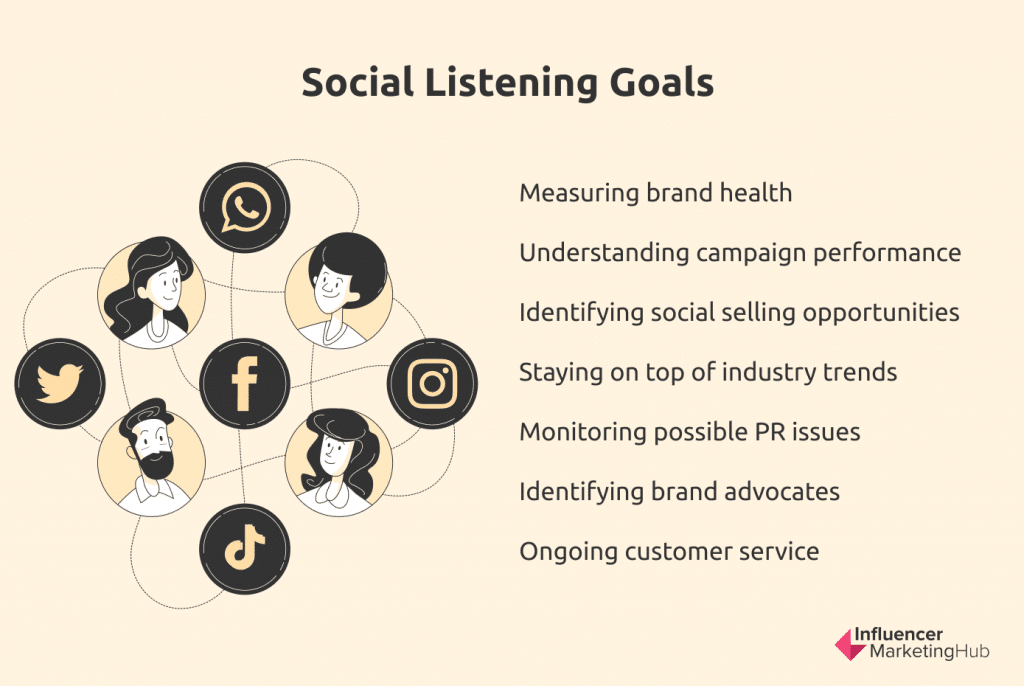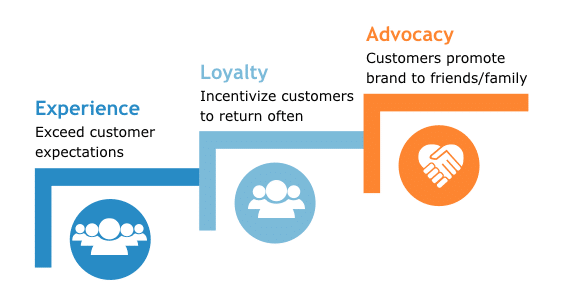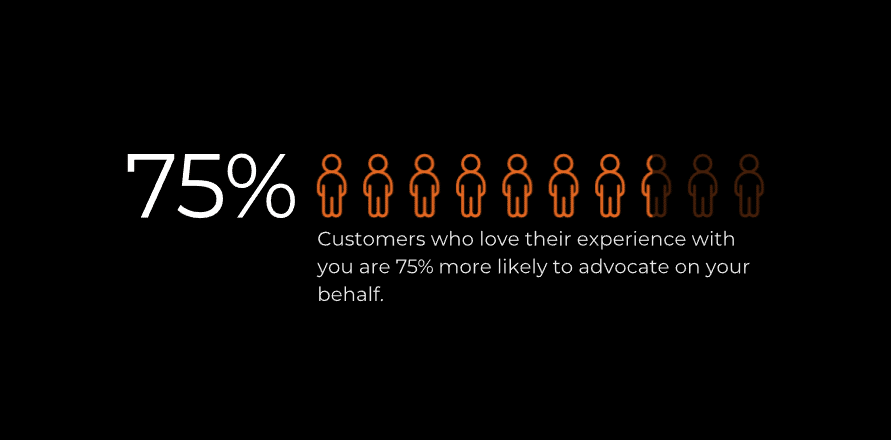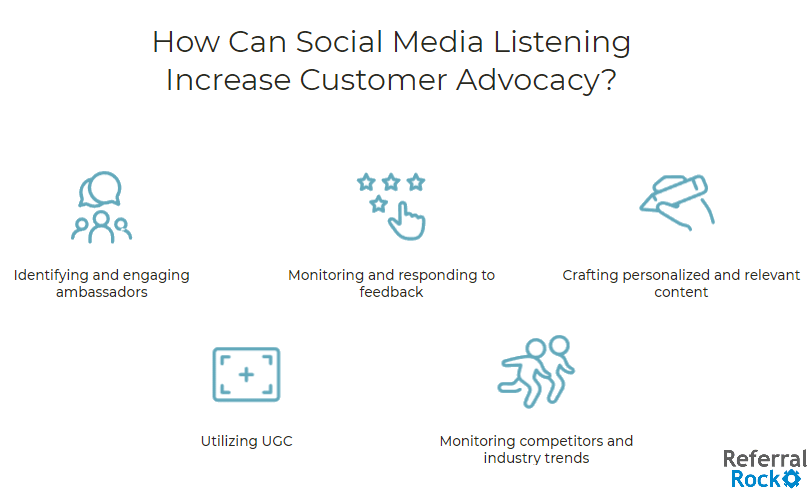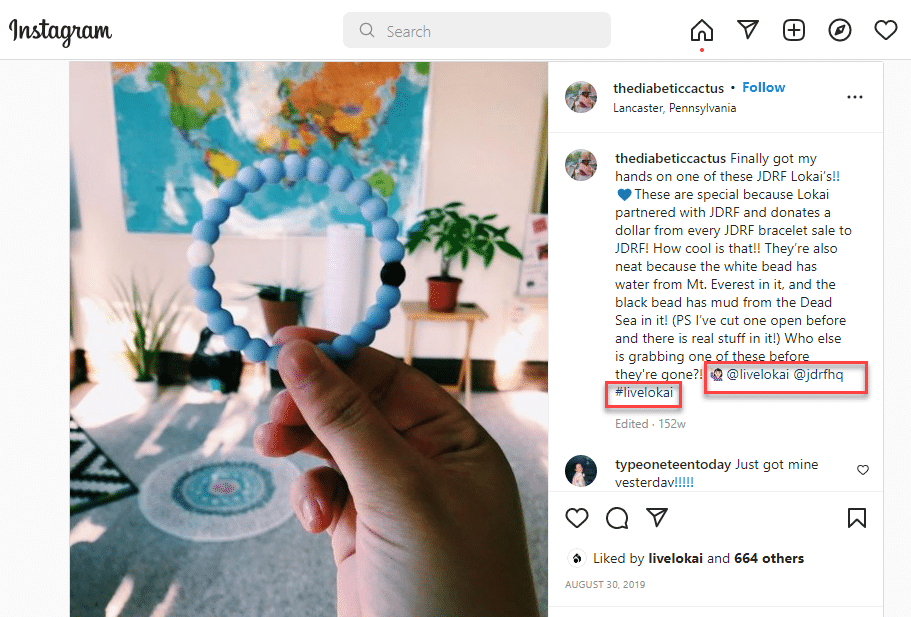The widespread use of social media has not only changed the way we communicate; it has remade the world into a global village.
What started as a simple communication medium has become the new marketplace for businesses. According to HubSpot’s 2022 State of Inbound Marketing Report, social media is currently the top marketing channel for 44% of businesses.
One of the top reasons why social media is a great marketing tool is that it hugely impacts consumers’ buying behavior through peer endorsements. Three out of four users say they discovered a product offering based on local recommendations and their friends’ posts.
With such a competitive global marketplace at your disposal, what are you doing to set yourself apart and get people to talk positively about you? One way you can distinguish your business is through social media listening.
So, what is social media listening? And more importantly, how can social media listening increase customer advocacy? Let’s figure it out!
What is social media listening?
Social media listening, also known as social listening, involves identifying, monitoring, and analyzing customer conversations to derive insights from the information and take action.
Generally, brands gather information such as product mentions, brand mentions, competitor info, and industry trends from conversations on social media, using brand mention tools (aka social listening tools).
With social listening, you can identify emerging trends, improve your brand offerings, avoid looming crises, and understand consumer sentiments toward your brand. A robust social listening strategy puts your company in a better position to drive customer advocacy.
How to conduct social media listening
Conducting social media listening is an excellent way to gain better insights into your customers. Studies show that almost 61% of businesses have a social media listening system in place.
Some brands hire social media managers to take on the role of social media marketing, which encompasses social listening. Others, particularly those with smaller accounts, conduct the listening in-house. Either way, conducting social media listening isn’t difficult and can easily be achieved with just a few steps.
Step 1: Discovery
The first step is to identify the social media platforms where your audience hangs out. These would usually include major social media platforms like Facebook, Instagram, Twitter, and other platforms that are relevant to your business.
Step 2: Keyword searches
What phrases do you want to track conversations about?
Identify the keywords and topics to track to identify conversations that might give you insights into consumers’ perceptions of your brand or products. You can also include competitor mentions to discover what your audience is saying about your competitors.
Step 3: Automation
Next, research the best social media listening and tracking tool. The best tool will help you track and analyze social media conversations happening in real-time.
Step 4: Analysis
Lastly, analyze the collected data to derive valuable insights from it. These insights can help you identify potential brand advocates, understand your competitors, and identify potential issues customers face that need to be addressed.
What is customer advocacy?
Customer advocacy is building and nurturing a relationship with your loyal customers who act as spokespeople for your brand.
It’s simply the act of establishing fruitful relationships with customers. These customers become your “brand advocates” who spread positive vibes about your brand, increasing brand awareness and boosting positive word of mouth.
Brands that focus on driving customer advocacy pay attention to customer retention, customer satisfaction scores, and other customer-centric metrics to inform their decision-making.
How are social listening and customer advocacy connected?
Now that you understand social listening and customer advocacy, it’s easy to see how they are connected. Essentially, social media listening is the first step toward exceptional customer service. By providing good and timely customer service, businesses can increase their customer experience (CX) and gain loyal customers in the long run.
These loyal customers become your brand advocates, spreading positive vibes about your business to their friends, family, and colleagues.
5 ways social listening can increase customer advocacy
Without further ado, let’s go over how social media, specifically through social listening, can lead to customer advocacy. We’ll cover five ways below.
1. Identifying and engaging ambassadors
Social media listening can help you identify potential brand ambassadors.
By following conversations about your brand, product, or services, you can easily identify people actively praising or defending your products.
You could also find people suggesting your product as a solution to a problem. It could be a key influencer talking about why they abandoned a competitor in favor of your products. Or an ordinary user who is happy and satisfied with your products.
When you find these people, you’ll want to let them know you appreciate their advocacy. From there, you may want to consider enrolling them into your ambassador program or give them more resources to better promote your brand.
You wouldn’t necessarily know about them unless you scan for brand or product mentions using a social media monitoring tool.
2. Monitoring and responding to feedback
Social media listening lets you keep your ears on the ground for all the mentions about your brand, products, and services.
Has a video gone viral mentioning one of your product offerings? Are customers complaining about your products? If so, what problematic areas are they highlighting? These scenarios can give you deep insights into your products or services.
It can be difficult to tell how a product resonates with your audience without listening to what customers say. Feedback lets you implement changes based on real-life concerns while letting customers know you care about their opinions.
Even if a user is happy about a product, social listening can help you find out what they love about it. You can then use this information to improve your brand offerings.
In a nutshell, listening to your customers on social media can tailor your products to what customers want. This can go a long way in improving customer loyalty and advocacy.
3. Crafting personalized and relevant content
Great content helps your business build a relationship with your audience. It also helps build trust with your readers and generate credibility.
So, how does social listening help build content that drives customer advocacy?
Social listening gives you a deep understanding of your audience. Most importantly, it helps you identify trending topics and customer preferences.
When you understand what makes your audience tick, you can create content that resonates with them. Are you speaking to the right audience? Are you crafting the right message for them? Is your content strategy in tune with what they want? Social listening can provide answers to all these questions.
To encourage loyalty and brand advocacy, speaking to your audience with content that matters to them is vital. Social listening allows you to obtain valuable insights into your customers’ behavior, preferences, demographics, geographic information, and more. This way, you can craft content that’s relevant to them with an authentic voice and tone.
Take Glossier, a New York-based online beauty shop, for example.
One of the reasons for its massive growth and recognition is its content strategy that’s built around understanding its audience. The company leverages UGC in its content strategy, which attracts micro-influencers and other social media enthusiasts.
Through UGC, consumers get to share Glossier’s products online, a strategy that has helped build an online community of loyal users.
4. Utilizing UGC
User-generated content, or UGC, refers to original, company-specific content created by customers and shared on social media.
Since the content is created by users who have interacted with the product, UGC is deemed more trustworthy and authentic. Additionally, UGC drives more engagement and is cost-effective compared to other forms of advertising.
So, how does UGC foster customer advocacy?
Social listening can help businesses identify consumers who are already advocating for their products and encourage them to create more UGC. Social listening can also help you identify users’ content that you can repurpose for your own marketing.
In addition, UGC can help businesses gain insights into their customer’s needs. By analyzing the type of content users create and share on social media, businesses can identify trends and patterns in consumer behavior and use the info to improve their product offerings.
5. Monitoring competitors and industry trends
Social media listening can give you valuable insights into your competitors and industry trends.
A robust social monitoring tool will allow you to gather information about your competitors and their products. If consumers deem competing products better than yours, you’ll be able to know why – and tweak your products to match or exceed theirs.
Additionally, social listening will allow you to spot flaws in competitor products.
For instance, you might see complaints about issues with one of your competitor’s products. In this case, you can leverage this intel in your marketing by highlighting how your products don’t suffer from such issues.
Social listening and customer advocacy: Using the right software
As we’ve covered above, brand mention software is virtual for real-time social listening. But it simply helps you find opportunities to reach out to customers and fans, and encourage them to advocate for you. It doesn’t offer a way to track their advocacy, or keep them engaged as advocates.
That’s where referral software or brand ambassador software comes in. This type of software generates unique links, so you’ll know every time a customer’s advocacy has led to sales. It also makes it easy to communicate with customer-advocates, and keep them engaged in promoting you. Referral Rock software can help you track and mobilize all types of customer advocates, including referrers and ambassadors.
Wrapping up
Social media listening is a crucial component of any marketing strategy. By monitoring social mentions related to a brand or its competitors, businesses can gain valuable insights into their customers’ needs and preferences.
This information can be used to improve a company’s products or services, create a solid base of loyal customers, and build stronger customer relationships.
Businesses can increase customer advocacy by:
- Identifying and engaging ambassadors,
- Monitoring and responding to customer feedback,
- Creating personalized and relevant content,
- Utilizing user-generated content,
- Monitoring competitors and industry trends
By investing in a robust social media listening tool, you can easily turn your audience into powerful referral sources.
Want to build a referral program that inspires customer advocacy? Get in touch with us today! Our referral software is designed to help you convert passive fans into active promoters.

